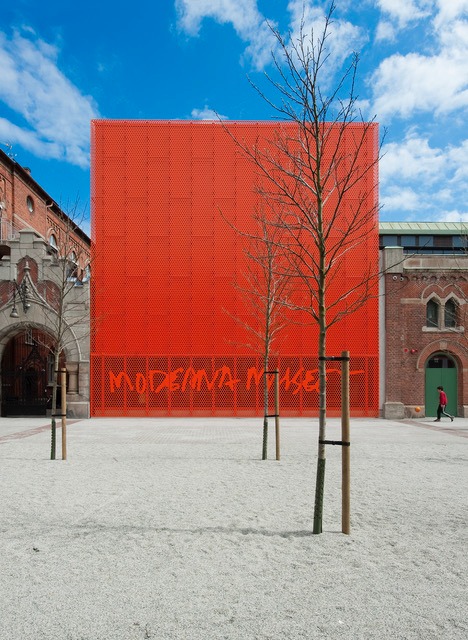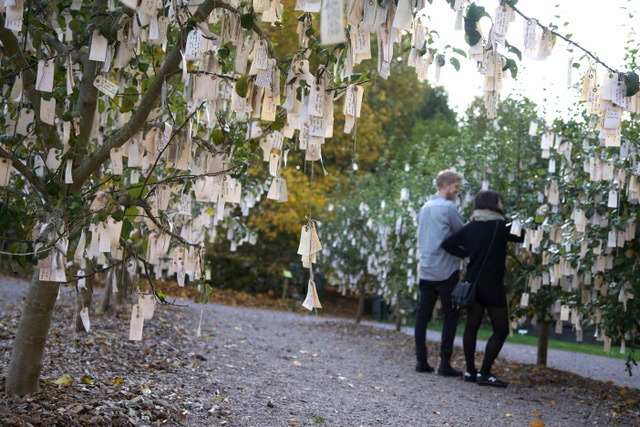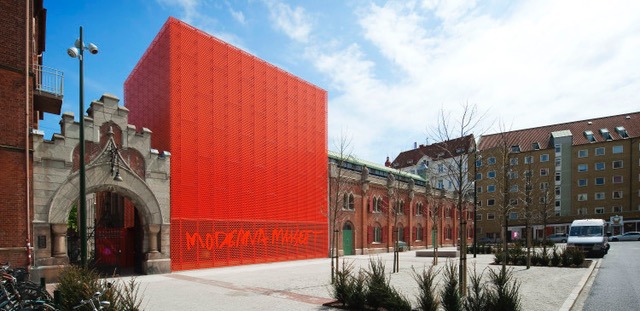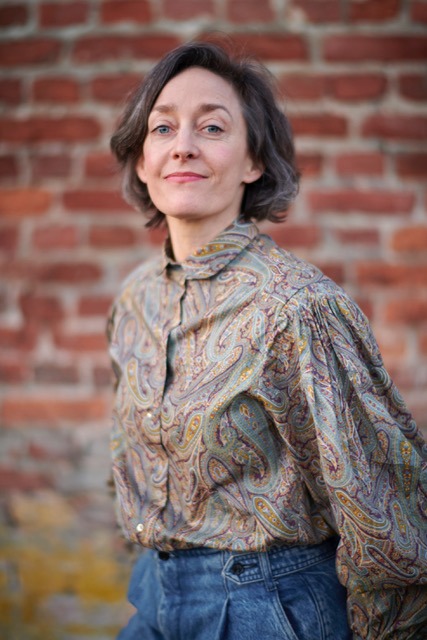
I am certain that an art experience can be very profound
An interview with Elisabeth Millqvist, the new head of Moderna Museet Malmö
“The most important things often happen on the periphery – where people least expect them”. These words by Yoko Ono are recalled by Elisabeth Millqvist, who will be the new Director of Moderna Museet Malmö beginning in August of this year. For the past ten years, Millqvist has been co-director and artistic director of Wanås Konst Sculpture Park in the historic province of Skåne on Sweden’s southern coast. Millqvist tells Arterritory.com that in her new role she is determined to put to good use her experience working at an art institution in a decidedly agricultural corner of the country, well knowing the importance of a broad outlook as well as the little-known axiom that the most exciting things might actually happen in suburbs and remote rural areas.
Her latest appointment was no surprise – Wanås Konst is recognized as one of the world’s leading sculpture parks due to its remarkable collection of works (around 70 site-specific pieces created especially for the park by artists such as Martin Puryear, Marina Abramovi, Igshaan Adams, Yoko Ono, Jeppe Hein, Rana Begum, Ann Hamilton, Jenny Holzer, Nathalie Djurberg & Hans Berg, etc.) as well as its comprehensive educational programmes attracting wide audiences (around 75,000 visitors per year). It is precisely this aspect of successful public engagement that Gitte Ørskou, Director of Moderna Museet Stockholm, has praised, highlighting Millqvist’s ability to transform the museum into a lively, stimulating meeting place for art and the general public.
You were an artistic director at Wanås Konst for more than a decade. What is the biggest challenge for you in moving from an outdoor museum to a classic museum with a controlled environment?
I have to admit that it is a very special position when you work for an outdoor museum. Most museums would say that they want a wide audience and people from many walks of life, while if you are outdoors, you already have a wide audience by itself. It comes very naturally because one might not be so interested in the arts but perhaps enjoy being outdoors. Also, the art experience outdoors is quite different. The museum building itself imposes restrictions and has long traditions, while the outdoors can be perceived as an everyday experience. A museum building with its collection has a lot of restraints that have to do with control, while outdoors you accept the fact that you cannot control anything. For example, allowing artworks to decay or to change their appearance would be a huge discussion in an indoor museum, whereas outdoors, the ageing of material is inevitable and accepted.
Moderna Museet Malmo. Photo: Åsa Lundén
Looking back at this time at Wanås, can you sum up your approach in bringing art and people together? What was your strength, or let’s say “superpower”, in implementing the programme?
I think that my superpower was realizing that the art and the context of it in the sculpture park makes viewers as well as artists brave. What I mean with that is – I never worried that this or that might be too complex, or too demanding; I think it has to do with knowing that the visitor will have a feeling of familiarity and access to an unhurried art experience – you see something and give yourself time to reflect and think about it. When it comes to artists, I have believed in their capacity and looked beyond what they usually do, and I have worked with several that had previously never exhibited outdoors. This trust in artists and audiences has been a fundament to build upon.
Yoko Ono, Wish Trees for Wanås, 1996/2011. Wanås Konst. Photo: Mattias Givell
The Malmö Museum is not an outdoor museum like Wanås. How much potential does a classic contemporary art museum have in terms of encouraging its audience to interact with art?
I think the potential is great. A museum can create a long-term relationship with visitors and make them trust the institution and not feel that they need to know everything (or understand) in advance, and that they can feel safe in their experience. But it is also important for the audience to feel truly wanted. If a museum asks you a question, the museum will have to want the answer.
Iris Müller-Westermann, your forerunner at Moderna Malmö, had her position renewed twice. What do the two of you have in common? What do you plan to do differently from her?
Iris made a programme with a lot of integrity, and I do hope this will also be something that could be linked with me. I look at her as a very knowledgeable curator who will dig into things that you have no idea about, and as someone who will find new angles to the known.
Talking about our differences – I am very excited about having access to the collection of Moderna Museet – it is a wonderful resource but, at the same time, I am a person who worked primarily with living artists – that is my natural habitat. And that is different from Iris, who often has a more historical approach. I also have a strong interest in exhibitions that have the possibility of combining dialogues with performative or educational aspects – I think that will also set us apart.
Moderna Museet Malmo. Photo: Åsa Lundén
Moderna Malmö is a rather new museum. Do you see it as a good opportunity to start your contribution to something that is still in its development?
Yes, I think that it is an exciting time because it is not so much about following traditions – everything is still very mouldable. We can shape what the museum is, what its characteristics are, and why people will love us. We can keep asking important questions: who is not represented, who do we exhibit, and what kind of knowledge do we share. Those questions can still be active! Actually, these are questions which always should be by your side, but it is harder when people have preconceived ideas based on a long history.
Moderna Malmö is one of the most beautiful exhibition spaces in Sweden – the building unites past and present. How do you plan to engage with its premises?
Yes, it has a very special architecture with both very high ceilings and quite low ceilings – there’s a beautiful big turbine hall as well as small spaces with lots of stairs. I am curious to see how these different spaces – the grand and the intimate – can be connected, and I am curious about what can happen outside the walls of the museum.
What do you think people are looking for in a museum?
It is always a little bit depressing for people working with exhibitions to find out that people’s reason to visit is to socialise, but I look at this a bit differently – I think it is a good thing! It is an active choice to be there rather than socialising in front of a hot dog stand. The context of socialising differs. People are looking for a place that invigorates their ideas and makes them reflect from a different perspective and on things that are currently not on their minds. The museum is also an allowing space to visit on your own as well as with someone else.
Maria Hassabi, STAGED? (2016) – undressed, Wanås Konst, 2017. Photo: Mattias Givell
What is your very own definition of the museum and its importance in today’s processes?
Museums and their definition is something that is constantly banged on about – from presentation to preservation, from what it should be to what it should not be... I cherish art’s capacity for reflection and coming together. At the core of the museum is the exchange between artists and the broader world, and the exchange between artwork, artist and audience. I also think the museum is very important as a noncommercial space, a meeting place where one can spend time – it adds to the dynamics of the city by providing another option.
What are the major lessons that two years of the pandemic have taught museums?
We see that the crisis pushed us toward a more sustainable way. It is a very natural lesson to think more long-term – and long-term is sustainable. And it really sped up an awareness of how to be in dialogue digitally. I think that is quite important because digital gives us so much more broader access and that allows us to be more inclusive.
What needs to be done to make people be “on one wave” with art? What have art institutions not done right – so far?
If a museum wants to be inclusive, it has to ask itself – is it relevant? If it gets you through the door, it also has to ask if it is interesting enough and how it offers something. I think that our art institutions sometimes only take the first step, but we need to scrutinize ourselves much more.
Mammalian Diving Reflex, These are the People in my Neighbourhood, 2017. Wanås Konst. Photo: Mattias Givell
Do you believe in the healing power of art?
I think that profound experiences can have healing capacities. And I am certain that an art experience can be very profound. In that way, I do think so. It’s not the purpose or the possibility of each artwork, but I have often experienced that people’s encounters with art have affected them deeply and have made a difference for them.
You are well acquainted with the art scene from all angles. What current developments would you like to bring to the fore? What is important in times like these?
In a broad sense, I have an interest in works that interact – when it takes two to make the piece – and I would like to give room and support for that within the museum. But to answer specifically about times like this with enormous challenges, I think we can learn from artworks that have been made during conflicts and war. They can make strategies and tactics visible that add perspectives beyond the media reports. Museums are often slow, which is partly a good thing, but we should be creative when it comes to how we can add artists’ voices in the current moment – works that help us shift horizons and connect across differences and that also add to ongoing debates.
Elisabeth Millqvist. Photo: Henrik Palmberg